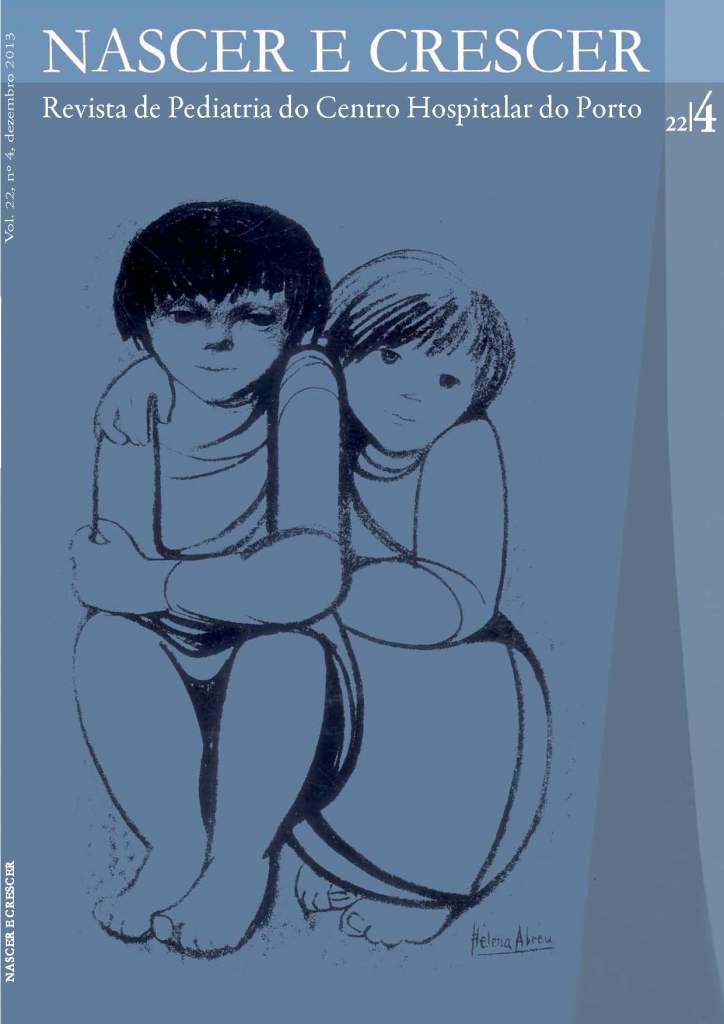PSYCHIATRIC, ADDITIVE OR ORGANIC: A CHALLENGE IN ADOLESCENCE
DOI:
https://doi.org/10.25753/BirthGrowthMJ.v22.i4.9895Keywords:
Adolescents, behaviour disturbances, encephalitis, Mycoplasma pneumoniaAbstract
Introduction: The extension of paediatric age to the adolescents introduced new challenges in the paediatric health care. Acute behaviour disturbances are usually associated with drugs or alcohol abuse. Besides that, they can represent the onset of either psychiatric disorders or neurological diseases of both infectious or autoimmune origin.
Clinical case: A teenager presented with sudden progressive behavioural disturbances. The investigation performed allowed the diagnosis of Mycoplasma pneumoniae meningoencephalitis.
Discussion / Conclusion: This case report underlines the need of a multidisciplinary approach to the adolescent with behaviour disturbances. The suspicion of an organic disease must always be kept in mind, and laboratory and imaging studies conducted to the possibility of a inflammatory neurological disorder, both infectious or immune. Mycoplasma pneumoniae is mainly a cause of respiratory disease but has the potential of extra pulmonary complications, being the neurological the most frequent of these. We highlight the challenging of evaluating teenagers in acute paediatric units.
Downloads
References
Daxboeck F, Blacky A, Seidl R, Krause R, Assadian O. Diag-
nosis, treatment and prognosis of Mycoplasma pneumoniae
childhood encephalitis: systematic review of 58 cases. J Child
Neurol 2004; 19:865 -71.
Guleria R, Nisar N, Chawla TC, Biswas NR. Mycoplasma
pneumoniae and central nervous system infections: a review.
J Lab Clin Med 2005; 146:55 -63.
Domenech C, Leveque N, Lina B, Najioullah F, Floret D. Role
of Mycoplasma pneumoniae in pediatric encephalitis. Eur J
Clin Microbiol Infect Dis 2009; 28:91 -4.
Talkington DF, Waites KB, Schwartz SB, Besser R. Emerging
from obscurity: Understanding pulmonary and extrapulmo-
nary syndromes, pathogenesis, and epidemiology of human
Mycoplasma pneumoniae infections. In: Emerging infections,
vol. 5 Washington, DC: ASM Press; 2001. p. 57 -84.
Meyer Sauter PM, Streuli JC, Iff T, Goetschel P. Mycoplasma
pneumoniae associated encephalitis in childhood -nervous
system disorder during or after a respiratory tract infection.
Klin Padiatr 2011; 223:209 -13.
Koskiniemi M. CNS manifestations associated with Myco-
plasma pneumoniae infections: summary of cases at the Uni-
versity of Helsinki, Finland, and review. Clin Infect Dis 1993;
:S52 -7.
Banerjee B, Petersen K. Psychosis following mycoplasma
pneumonia. Mil Med 2009; 174:1001 -4.
Delmas MC, Gauthier C, Rapin F. Manifestations neurologi-
ques des infections à Mycoplasma pneumoniae. Arch Pédiatr
; 3:573 -5.
Lewis P, Glaser CA. Encephalities. Pediatr Rev 2005; 26:353-
-63.
Christie LJ, Honarmand S, Talkington DF, Gavali SS, Preas
C, Pan CY, et al. Pediatric encephalitis: what is the role of
Mycoplasma pneumoniae? Pediatrics 2007; 120:305 -13.
Narita M. Pathogenesis of neurologic manifestations of Myco-
plasma pneumoniae infection. Pediatr Neurol 2009; 41:159-
-66.
Abramovitz P, Schvartzman P, Harel D, Lis I, Naot Y. Direct
invasion of the central nervous system by Mycoplasma pneu-
moniae: a report of two cases. J Infect Dis 1987; 155:482 -7.
Lin JJ, Lin KL, Hsia SH, Wu CT, Chou IJ, Wang HS. Analysis
of status epilepticus with Mycoplasma pneumoniae Encepha-
litis. Pediatr Neurol 2010; 43:41 -5.
Tsiodras S, Kelesidis I, Kelesidis T, Stamboulis E, Giama-
rellou H. Central nervous system manifestations of Mycoplas-
ma pneumoniae infections. J Infect 2005; 51:343 -54.
Arnold SE. Psychosis and mycoplasma penumoniae, Hillside
J Clin Psychiatry 1987; 9:231 -5.
Downloads
Published
How to Cite
Issue
Section
License
Copyright and Authors' Rights
All articles published in Nascer e Crescer - Birth and Growth Medical Journal are Open Access and comply with the requirements of funding agencies or academic institutions. For use by third parties, Nascer e Crescer - Birth and Growth Medical Journal adheres to the terms of the Creative Commons License "Attribution - Non-Commercial Use (CC-BY-NC)".
It is the author's responsibility to obtain permission to reproduce figures, tables, etc. from other publications.
Authors must submit a Conflict of Interest statement and an Authorship Form with the submission of the article. An e-mail will be sent to the corresponding author confirming receipt of the manuscript.
Authors are permitted to make their articles available in repositories at their home institutions, provided that they always indicate where the articles were published and adhere to the terms of the Creative Commons license.


